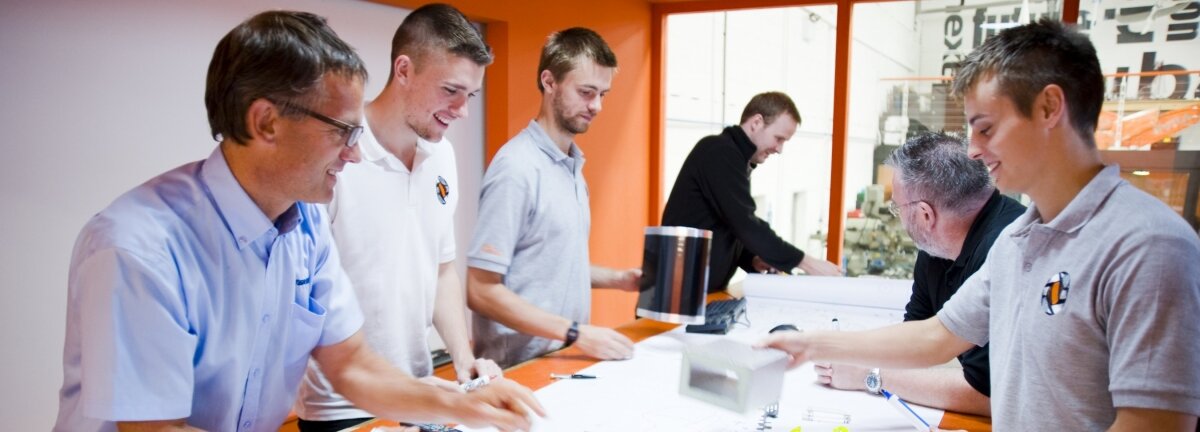Tackling business issues through design: finding new routes to old problems

In an increasingly design-savvy world, it is remarkable how little the UK’s world-leading design services are exploited by UK businesses. Talk to many small to medium-sized enterprises (SMEs) and it becomes clear that their view of design rarely reaches beyond their website and logo. While these are critical aspects of design, there is so much more it can do.
Understanding how to deploy design strategically and effectively can seem complex, particularly when using it to respond to business challenges. For many it is not a high priority in the face of other pressing business imperatives. Design can seem like something to explore when times are good perhaps, not when resources are squeezed. But those who understand the value of external advice, and are then willing to put it into practice, will reap great benefits – gaining a stronger foothold in the marketplace, rising above the general noise and becoming visible in new markets here and abroad. Such businesses are the ones that stand to win.
Businesses who take that step and sign up to a Design Council coaching programme find themselves matched with an expert – a Design Associate (DA) – advising, guiding and supporting them along their design journey.
The DA takes the business through the entire design process: from reframing business challenges and exploiting design to address these challenges, through to finding the right design supplier to implement design projects – offering best practice guidance along the way. In short, they show how to manage design effectively.
Our Design Associates have many different areas of expertise, but they all have one thing in common: they are all expert at managing design in business. They leave a legacy of more than a great design project: they also embed the knowledge of how to manage design in the future. A host of diverse businesses, large and small, have been helped by working with a Design Associate: from food retail companies and farm shops, services businesses in areas as broad as finance and logistics, through to manufacturing and more industrial businesses.
The reasons a business might need external support – and may then turn to Design Council – are many and often complex. Here are three common challenges that Design Associates have encountered and subsequently helped to address:
1. Making innovation happen
Some businesses are doing very well when Design Council meets them, but what they are looking for is a way to stay ahead of the game by continuously innovating and developing new products.
Gripple, a manufacturer of wire tensioning products for agriculture and industry, was one of those businesses. By working with Design Council, they were exposed to tools and techniques to generate ideas and innovation across the whole business – giving anyone within the company the freedom to have an idea that could then develop into a new product.
Alongside this, a process and structure was also put in place to manage a large number of new products more efficiently. This work has been fundamental to Gripple’s ambitious growth plans.
2. A differentiated offer in a commoditised market
Some service companies, such as logistics and storage businesses for instance, may struggle at first to see how design could benefit them. West Midlands-based White Logistics was one such business. Eager to grow at a time when the UK haulage industry was becoming ever more competitive and increasingly commoditised, they knew they needed some help, but could not see how design might give them the support they needed.
Upon first contact with a Design Associate, Judith Stracey, the company’s chairman, highlighted a common misconception about design, when she asked: “Design? What’s that got to do with us?” Working with a DA quickly changed her mind. A decision was made to invest in two design projects: one to strengthen the corporate brand, the other a service design project to harness customer insight for new product development.
The result was an award-winning rebrand and a service design project that developed a number of new initiatives – including a driver training programme to strengthen the drivers’ roles as brand ambassadors. £500k in new business in the first six months after the DA’s intervention was proof enough of what design had to do with White Logistics, a company that continues to grow.
3. Building credibility and trust in the marketplace through a distinctive brand story
When the Levett family wanted to open a retail space connected to the land they had farmed for seven generations, they knew one thing: they wanted something more refined than the standard farm shop – a ‘Kensington to Kent experience’. However, they were not sure how best to articulate what they wanted or how to build the strategy to secure it.
The Design Associate they worked with said: “Wanting a quality store is one thing. But to achieve this you need to create the right brand experience, and this goes beyond simply having a nice interior.” The family’s farming heritage, and its long connection with the area, presented a clear opportunity to create a distinctive brand that has resulted in Hartley Farm shop’s exclusive feel.
A full understanding of brand and what it means to the success of a business is vital. Brands are built around a wide set of associations that people have with a company. Developing and managing these associations is a complex process with design at its core. So much more than the logo, a strong brand encompasses the culture, values and conduct of a company itself, as the Levetts’ successfully discovered.
Subscribe to our newsletter
Want to keep up with the latest from the Design Council?
